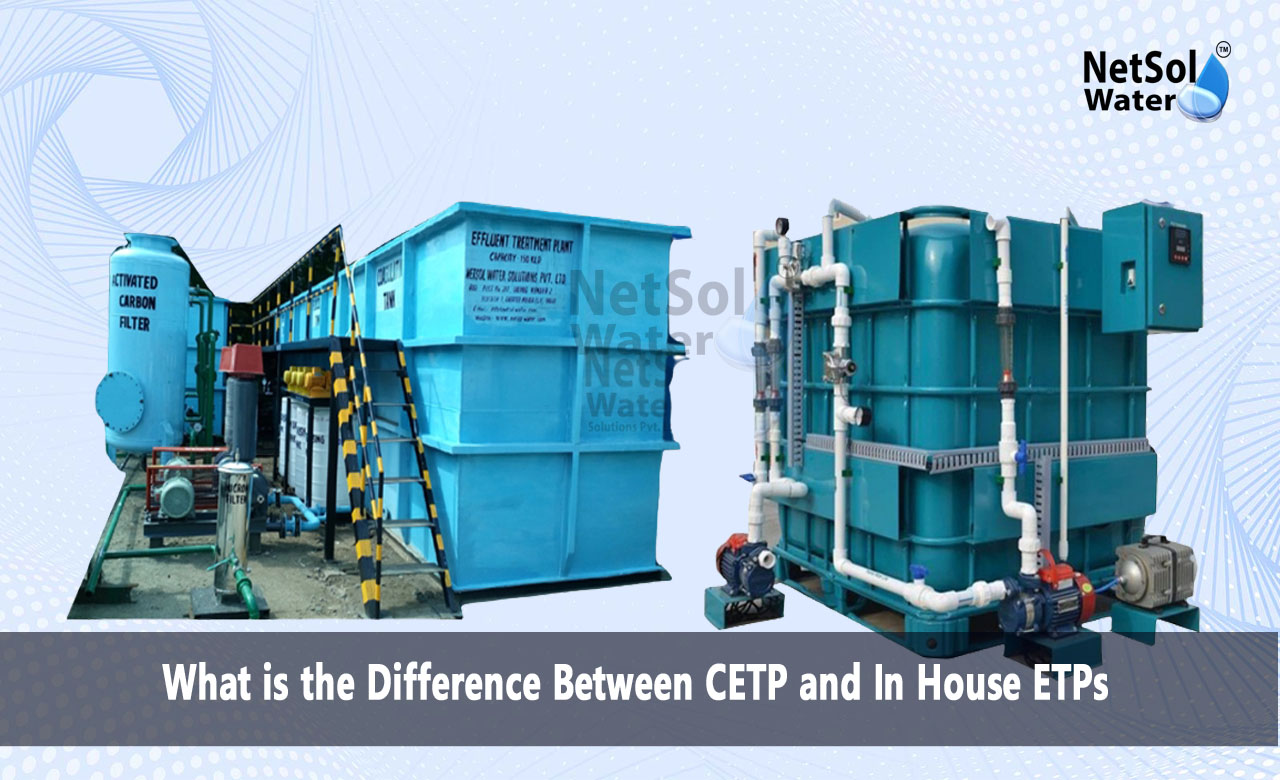What is the Difference Between CETP and In House ETPs?
A CETP serves multiple industrial units in one shared space. An In-House ETP belongs to a single plant and treats water on site. Both systems work to clean wastewater before it leaves the plant. Each choice can change cost management and environmental impact. Many managers weigh their options based on budget space and local rules. The term CETP stands for Common Effluent Treatment Plant. The term In-House ETP stands for Effluent Treatment Plant that operates within one facility.
What is CETP?
A CETP stands for Common Effluent Treatment Plant. This plant gathers waste water from many units and sends it to one treatment system.
How a CETP Works?
A network of pipes carries waste water to a central tank. The plant removes solids and harmful chemicals before cleaned water leaves the site.
What is In-House ETP?
An In-House ETP provides treatment inside a single facility. It handles waste water at the source with a dedicated unit.
Main Features
The system uses tanks and filters to remove pollutants step by step. It sends treated water back to the plant or to a drain pipe.
Comparing Costs between CETP and In-House ETP
Cost drives many decisions in waste water treatment. We will compare setup and running cost for both systems.
Setup Cost
A CETP shares initial expense across many users to lower individual cost. An In-House ETP needs a full investment from one company before it starts work.
Operating Cost
A CETP charges each unit a fee for treatment and maintenance. An In-House ETP lets a single plant control its own power staff and repair costs.
Flexibility and Control
Control over operations can influence plant performance. This part will look at the ease of managing each system.
Operational Control
A CETP follows a fixed schedule for all users. Each unit must fit its working hours to the plant timetable.
An In-House ETP lets a plant pick times for treatment and adjust levels on demand.
Responding to Demand Changes
A CETP can face strain when many units increase flow at once. Then each user may see lower treatment speed.
An In-House ETP can expand or shrink its capacity as needed by its single owner.
Regulatory Compliance
Meeting rules can affect plant choice. Herewill cover how each system handles legal standards.
Compliance in a CETP
A central authority monitors a CETP to meet all local rules. Then each user follows a single set of reports and tests.
Compliance in an In-House ETP
An In-House ETP needs direct permits for each plant. Then the firm files its own reports and arranges tests with labs.
Conclusion
Many factors can guide a choice like budget, site size and local rules. Experts can review each case and point a firm to the right solution. You can ask questions and get clear advice. When you need to explore What’s the Difference Between CETP and In-House ETPs reach out today for a free talk or a meeting. Let us help you make a strong decision.
Contact Netsol Water at:
Phone: +91-9650608473, Email: enquiry@netsolwater.com



